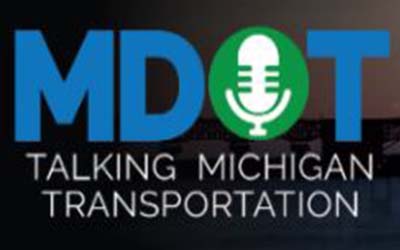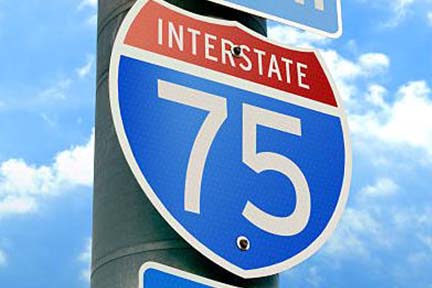
by orionontv | Aug 30, 2024 | Transportation

by orionontv | Aug 28, 2024 | Transportation

Gov. Whitmer Announces Orange Barrels Will Be Moved and Lanes Reopened to Ease Labor Day Weekend Travel
LANSING, Mich. — This Labor Day weekend, Governor Gretchen Whitmer announced the Michigan Department of Transportation (MDOT) is moving orange barrels to the side of the road and removing lane restrictions on 60 percent of its road and bridge projects statewide to ease traffic delays for holiday travelers.
“Labor Day weekend is reminder that it’s time to soak up the last few weeks of our Pure Michigan summer sunshine,” said Governor Whitmer. “During this busy travel week, we’re moving construction barrels and lifting traffic restrictions wherever we can so you can get where you need to go safely and smoothly. But next Tuesday, you better believe that we will be right back to fixing the damn roads. Since I took office, Michigan has fixed nearly 23,000 lane miles of road and 1,600 bridges, supporting more than 100,000 jobs. Drive safe!”
Beginning at 3 p.m. Friday, Aug. 30, and continuing until 6 a.m. Tuesday, Sept. 3, 96 out of 161 projects statewide will have lane restrictions removed. While motorists will see suspended operations in most MDOT work zones for the weekend, drivers are advised that equipment and certain traffic configurations may remain in place, like temporary shifts or shoulder closures.
Travelers are also reminded that for safety and security, the Mackinac Bridge will be closed to public traffic on Labor Day from 6:30 a.m. to noon during the Annual Bridge Walk. Southbound I-75 and US-2 traffic will be stopped at Exit 344 on the north side of the bridge; northbound I-75 traffic will be stopped at Exit 337 on the south end. For more information, visit the Mackinac Bridge Authority (MBA) website at www.MackinacBridge.org/Walk or call the MBA at 906-643-7600.
“It’s been a very productive construction season so far at MDOT, with a record amount of work made possible by increased federal infrastructure investment from the Bipartisan Infrastructure Law, as well as Gov. Gretchen Whitmer’s Rebuilding Michigan program. We thank everyone for their patience while these much-needed projects have been performed” said State Transportation Director Brad Wieferich. “With the end of summer, many folks will be taking this opportunity for one last road trip, so we’ve pulled back the barrels as much as we can for the holiday weekend. However, we can’t do it for every project, so please drive safely through all work zones you may encounter. We thank drivers for continuing to show patience behind the wheel and following all posted speed limits in work zones. Let’s keep it up so everyone, including drivers, their passengers and road workers, all make it home each and every night.”
MDOT oversees I, M, and US routes and is responsible for nearly 10,000 miles of state highways, which carry more than 50 percent of all traffic and approximately 70 percent of commercial traffic in Michigan.
The following is a list of work zones that will remain active or have lane restrictions during Labor Day weekend. If necessary, detour routes will be posted at the project location. All closures are subject to change. For the most up-to-date information on MDOT projects, go to the Mi Drive website at www.Michigan.gov/Drive.
|

by orionontv | Aug 22, 2024 | Transportation
Traffic Advisory I-75 in Oakland County 8/22/24
NB/SB I-75 will be closed between M-150/Rochester Rd and Big Beaver, Sunday, 8/25, 2am-9am for utility work.
Detours:
NB I-75 to NB M-150/Rochester Rd to EB Big Beaver to NB I-75.
SB I-75 to EB Big Beaver to SB M-150/Rochester Rd to SB I-75.

by orionontv | Aug 21, 2024 | Transportation
|
A veteran automotive reporter talks EV sales, charging networks and more
On this week’s edition of the Talking Michigan Transportation podcast, Joann Muller, a Detroit-based reporter for Axios covering all things mobility, talks about electric vehicle (EV) sales, progress on developing charging networks, consumers buying smaller vehicles, and her experience with a new device that converts a conventional bicycle to an e-bike.
Listen now: https://www.buzzsprout.com/1374205/15611494-a-veteran-automotive-reporter-talks-ev-sales-charging-networks-and-more


- According to a new report, sales of battery-powered models across America are up compared to the rest of the industry. The boost has been spurred on by price cuts, tax breaks and other incentives aimed at encouraging Americans to go electric.
- New technology allows for an e-bike conversion. From the story: With pedaling assistance from a simple friction drive system, it’s less complex and a lot cheaper than a fully electric bike.
|
|
|
|
|

by orionontv | Aug 15, 2024 | Transportation
How Michigan State Police deploy ghost riders to curb distracted driving
Despite Michigan’s hands-free driving law being in place for more than a year now, police are still seeing drivers holding their phones or other devices in vehicles. The practice is especially troublesome where road work is going on.
Listen now: https://www.buzzsprout.com/1374205/15589369-how-michigan-state-police-deploy-ghosts-to-curb-distracted-driving

 |
|
On this week’s edition of the Talking Michigan Transportation podcast, conversations with a construction engineer facing the challenge of working with contractors to rebuild roads in a timely manner while maintaining mobility for the public.
First, Tanya Pawlukiewicz, MDOT’s Grand Region construction engineer, talks about a number of crashes that have occurred in a work zone on a major project on I-96 in Ionia County.
|

Later, Michigan State Police Sgt. Bradley Campbell talks about what he and his colleagues are seeing and hearing along the I-96 corridor and the effectiveness of Operation Ghost Rider.
One conclusion: Despite aggressive public awareness campaigns, expansive media coverage and other efforts, many people don’t know about the hands-free law. On a recent day, Campbell says four of nine drivers stopped for using their phones told troopers they were ignorant of the law.
|
|
|

by orionontv | Aug 12, 2024 | Transportation
The life and times of a DOT legislative liaison
On this week’s edition of the Talking Michigan Transportation podcast, a conversation with Troy Hagon. For 16 years, Troy has worked in the Michigan Department of Transportation’s (MDOT) Office of Government Affairs, the past six as director.
Listen now: https://www.buzzsprout.com/1374205/15550756-the-life-and-times-of-a-dot-legislative-liaison

Troy will be leaving MDOT soon to become the deputy director of the American Council of Engineering Companies of Michigan (ACEC).
During the conversation, Troy reflects on his work in the Michigan Legislature prior to coming to MDOT. He also recalls some good memories of his work at the department and the need to continue efforts to find a long-term, sustainable solution to Michigan’s decades-long under-investment in transportation infrastructure.
|
|








